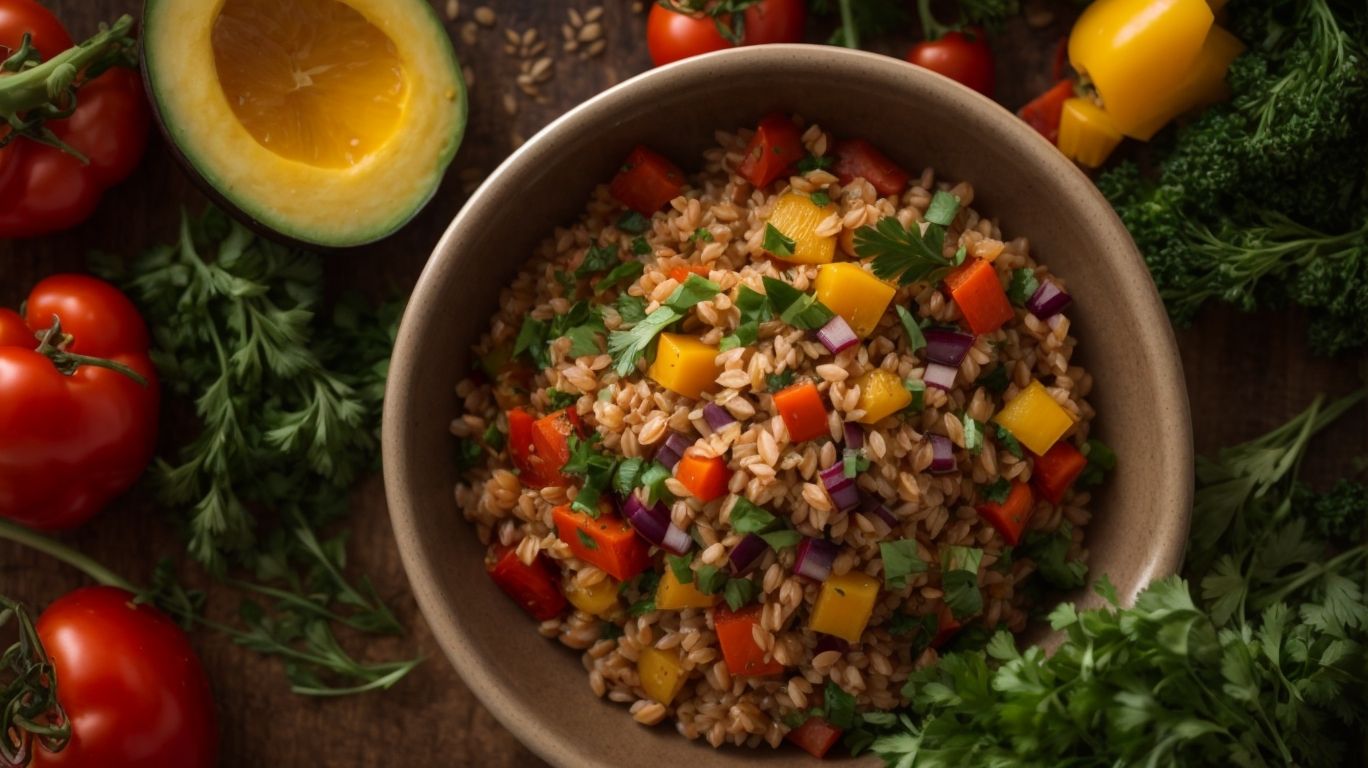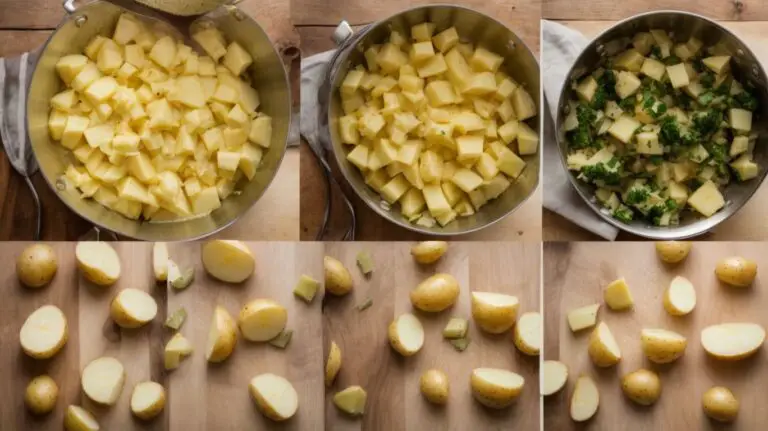How to Cook Farro?
Have you ever wondered what exactly farro is and how to cook it?
We will explore everything you need to know about this nutritious ancient grain. From different types of farro to the best ways to use it in recipes, we will cover it all.
Whether you prefer a stovetop, Instant Pot, or slow cooker method, we’ve got you covered.
Get ready to elevate your cooking game with farro and impress your family and friends with delicious and healthy meals. Let’s dive in!
Key Takeaways:
What Is Farro?
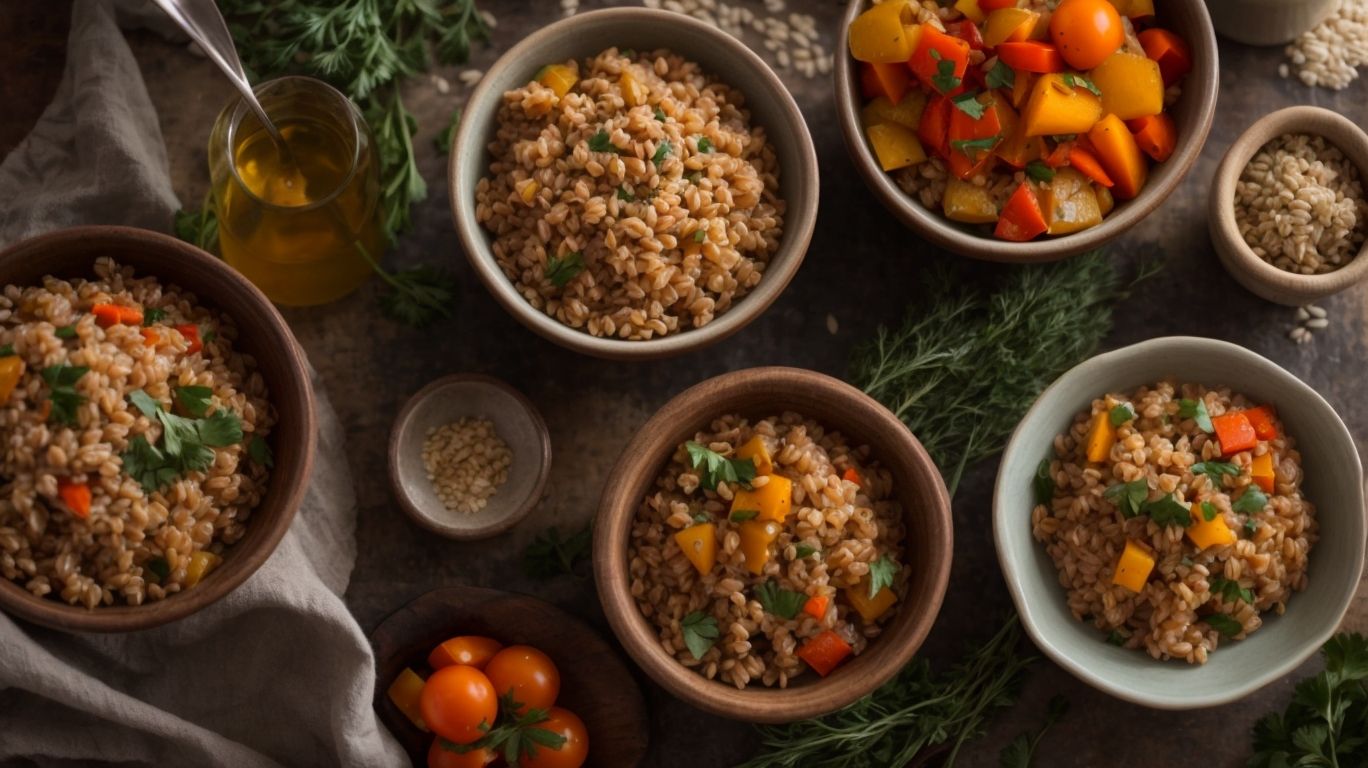
Credits: Poormet.Com – Joe Robinson
Farro, a versatile ancient grain, is renowned for its chewy texture, nutty flavor, and rich nutrient profile, boasting high levels of protein and fiber.
Farro, often referred to as ‘the mother of all wheat’, has been a staple in Mediterranean cuisine for centuries. This grain is not only packed with essential nutrients, such as iron, magnesium, and B vitamins, but it also offers a unique culinary experience due to its ability to absorb flavors well.
Whether served as a hearty salad, added to soups, or used as a base for pilafs, farro adds a wholesome touch to any dish. Its robust nature allows it to hold up well when cooked, maintaining a satisfying bite that pairs wonderfully with a variety of ingredients.
Where Can You Buy Farro?
Farro can be conveniently purchased from various sources, including online platforms like Amazon, ensuring easy access to this wholesome grain.
While brick-and-mortar grocery stores and health food stores may carry farro, online retailers such as Amazon offer a wide selection and the convenience of doorstep delivery. When sourcing farro, it’s essential to look for options like whole grain, semi-pearled, or pearled, each offering different cooking times and textures. To ensure you are getting high-quality farro, check for organic certifications or buy from reputable brands known for their commitment to quality grains. Consider opting for whole grain farro for maximum nutrients and fiber content.
What Are the Different Types of Farro?
Farro comes in various forms, including whole, semi-pearled, and pearled varieties, each offering distinct characteristics and culinary applications.
Whole farro retains all three parts of the grain – the bran, germ, and endosperm, making it the most nutritious and chewiest option among the three. Its nutty flavor and hearty texture are ideal for salads, stews, and pilafs.
On the other hand, semi-pearled farro undergoes partial removal of the bran, resulting in a quicker cooking time while still maintaining some nutritional value and a slightly softer texture.
Pearled farro, being the most processed, has the outer bran layer completely removed, leading to a faster cooking time but with a milder flavor and softer texture compared to whole and semi-pearled varieties. It works well in soups, risottos, and other dishes where a softer grain is desired.
Whole Farro
Whole farro, characterized by its intact bran and germ, is a true whole grain that retains maximum nutrients and fiber, ideal for those seeking a wholesome dietary addition.
Due to its intact structure, whole farro offers a plethora of health benefits. It is rich in fiber, promoting digestive health and aiding in weight management. This ancient grain is a great source of protein, essential vitamins, and minerals like iron and magnesium.
In terms of culinary versatility, whole farro can be utilized in various dishes. Its nutty flavor and chewy texture make it an excellent addition to soups, salads, and pilafs. It can also be ground into flour for baking nutritious bread or used as a base for risottos.
In terms of cooking techniques, whole farro can be boiled, steamed, or even toasted to enhance its flavor. It can be cooked with water, broth, or milk, depending on the desired recipe. The cooking time varies depending on the variety of farro, but generally, it takes around 30-40 minutes to achieve a tender yet slightly chewy consistency.
Semi-Pearled Farro
Semi-pearled farro, with some of the bran removed, strikes a balance between nutritional benefits and shorter cooking times, making it a convenient choice for quick and nutritious meals.
Semi-pearled farro retains a significant amount of its nutrients due to the partial removal of the tough outer bran layer, ensuring a good source of fiber, protein, and essential minerals.
This ancient grain’s shorter cooking time compared to whole farro allows for efficient meal preparation without compromising on its health benefits.
Its slightly chewy texture and nutty flavor provide a delightful addition to salads, soups, or pilafs, showcasing its culinary versatility.
Pearled Farro
Pearled farro, having the bran and germ removed, cooks faster and has a softer texture, appealing to those looking for a quicker cooking alternative with a milder taste.
The process of pearling removes the tough outer layer of the grain, making it more approachable for those who may find traditional farro too chewy or time-consuming to cook. Its soft texture works exceptionally well in salads, soups, risottos, and even breakfast bowls. With a mild nutty flavor, pearled farro serves as a versatile ingredient that can adapt to both savory and sweet dishes. Whether you’re aiming for a hearty grain-based salad or a creamy farro porridge, this processed grain option offers a delightful culinary experience.
How to Prepare Farro for Cooking?
Preparing farro for cooking involves rinsing the grains to remove debris and optionally soaking them to reduce cooking time and improve texture.
Rinsing farro before cooking is crucial as it helps to get rid of any impurities or dirt that may be present on the grains. This simple step also helps to wash away any bitterness that may be lingering on the farro.
By soaking the farro before cooking, you can significantly cut down the cooking time needed, making it more convenient and efficient. Soaking the farro can help improve its texture, resulting in a softer and more pleasing consistency in the final dish.
Rinse the Farro
Rinsing farro under cold water helps remove dust, debris, and excess starch, ensuring cleaner grains for cooking and enhancing the final dish’s quality.
Properly rinsing farro is a crucial step in prepping this ancient grain, as it not only improves its cleanliness but also plays a significant role in enhancing its flavor. By washing away impurities and surface residue, you ensure that your farro is free from any unwanted particles that might disrupt the dish’s taste and texture.
To achieve this, place the farro in a fine mesh strainer or colander and run cold water through it, gently massaging the grains with your fingers to aid in the cleaning process. Repeat the rinsing process until the water runs clear, indicating that the farro is thoroughly cleaned and ready for cooking.
Soak the Farro (Optional)
Soaking farro before cooking is an optional step that can reduce cooking time and improve the grain’s texture, making it softer and more palatable.
When opting to soak farro, it’s essential to consider the impact on cooking times. By soaking the grains overnight or for at least 8 hours, you can significantly cut down the cooking time. This is particularly beneficial if you’re short on time but still want to enjoy the wholesome goodness of farro.
Soaking can help soften the texture of farro, especially for recipes like salads or soups where a more tender grain is preferred. This method allows the grains to absorb moisture, resulting in a pleasant chewiness without being overly tough.
How to Cook Farro?
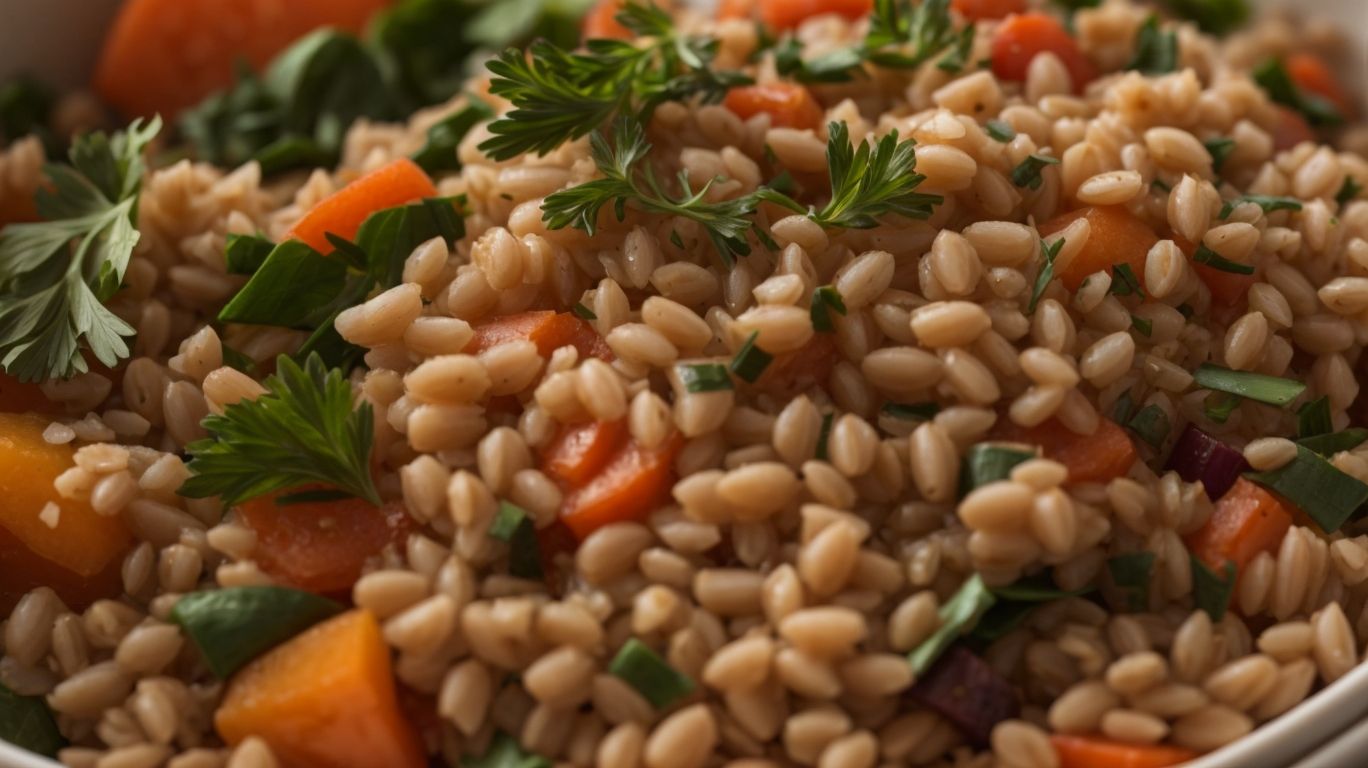
Credits: Poormet.Com – Jesse Hill
Cooking farro can be done using various methods such as stovetop simmering, boiling, toasting for enhanced flavor, freezing for future use, or using the convenient Instant Pot for quick and consistent results.
Stovetop simmering is a traditional method of cooking farro, where the grain is simmered in water or broth until it reaches a tender consistency. This method allows the farro to absorb the flavors of the cooking liquid, resulting in a rich taste.
Boiling farro is a quicker alternative to simmering, where the grain is submerged in boiling water until it softens. While this method is faster, it may not infuse the farro with flavors as deeply as simmering.
Toasting farro before cooking can elevate its nutty flavor profile. Simply place the dry farro in a hot pan and toast until fragrant before adding liquid to cook. This technique adds a delicious depth to the grain.
Freezing farro allows you to prepare a batch in advance and store it for later use. Simply cook the farro according to your preferred method, freeze it in portions, and thaw as needed for quick meals.
Using the Instant Pot for farro cooking ensures a hassle-free and time-saving process. The pressure cooking method helps to lock in moisture and flavor, resulting in perfectly cooked farro every time.
Stovetop Method
The stovetop method of cooking farro allows for precise control over the grain’s texture and flavor, making it suitable for a wide range of seasonal dishes.
When simmering farro on the stovetop, it’s essential to start with a 2:1 ratio of water to grains in a saucepan. Bring the water to a boil and add the farro, then reduce the heat to a gentle simmer and cover. Let it cook for about 20-30 minutes until tender yet still slightly chewy, stirring occasionally to prevent sticking.
To enhance the nutty flavor of farro, consider toasting it in a dry skillet before cooking. This process can elevate the overall taste profile and add depth to your dishes.
For a seasonal twist, try cooking farro in vegetable or chicken broth instead of water, adding a wonderful richness and depth of flavor. Pair it with roasted vegetables, fresh herbs, and a drizzle of olive oil for a delicious and wholesome meal.
Instant Pot Method
Using the Instant Pot to cook farro provides a convenient and efficient method, ideal for gluten-free and keto-friendly meal preparation.
Farro, a hearty ancient grain rich in fiber and nutrients, becomes tender and flavorful when cooked in the Instant Pot. This method saves time compared to traditional stovetop cooking, as the pressure cooker accelerates the cooking process.
Simply rinse the farro, add it to the Instant Pot with water or broth, and set the timer for around 6-8 minutes on high pressure. Allow natural pressure release for a perfectly cooked batch.
This versatile grain can be used as a base for salads, soups, pilafs, or even made into a tasty breakfast porridge with a touch of honey and fresh fruit.
Slow Cooker Method
The slow cooker method offers a hands-off approach to cooking farro, resulting in a chewy and toasty grain that absorbs seasonal flavors beautifully.
Slow cooking farro not only enhances its nutty flavor and chewy texture but also allows the grains to fully absorb the essence of seasonal ingredients. This method is especially convenient for busy days when you want a delicious meal waiting for you at the end of a hectic day. Consider adding warm spices like cinnamon and nutmeg in the fall or fresh herbs like mint and parsley in the summer to elevate the taste.
For a delightful autumn-inspired dish, try creating a slow-cooked farro risotto with butternut squash, sage, and a touch of Parmesan cheese. In the warmer months, a Mediterranean-inspired farro salad with cucumbers, tomatoes, olives, and feta cheese is a refreshing option. The versatility of the slow cooker method allows for a wide range of flavor profiles, making it a versatile staple in your kitchen arsenal.
What Are the Best Ways to Use Cooked Farro in Recipes?
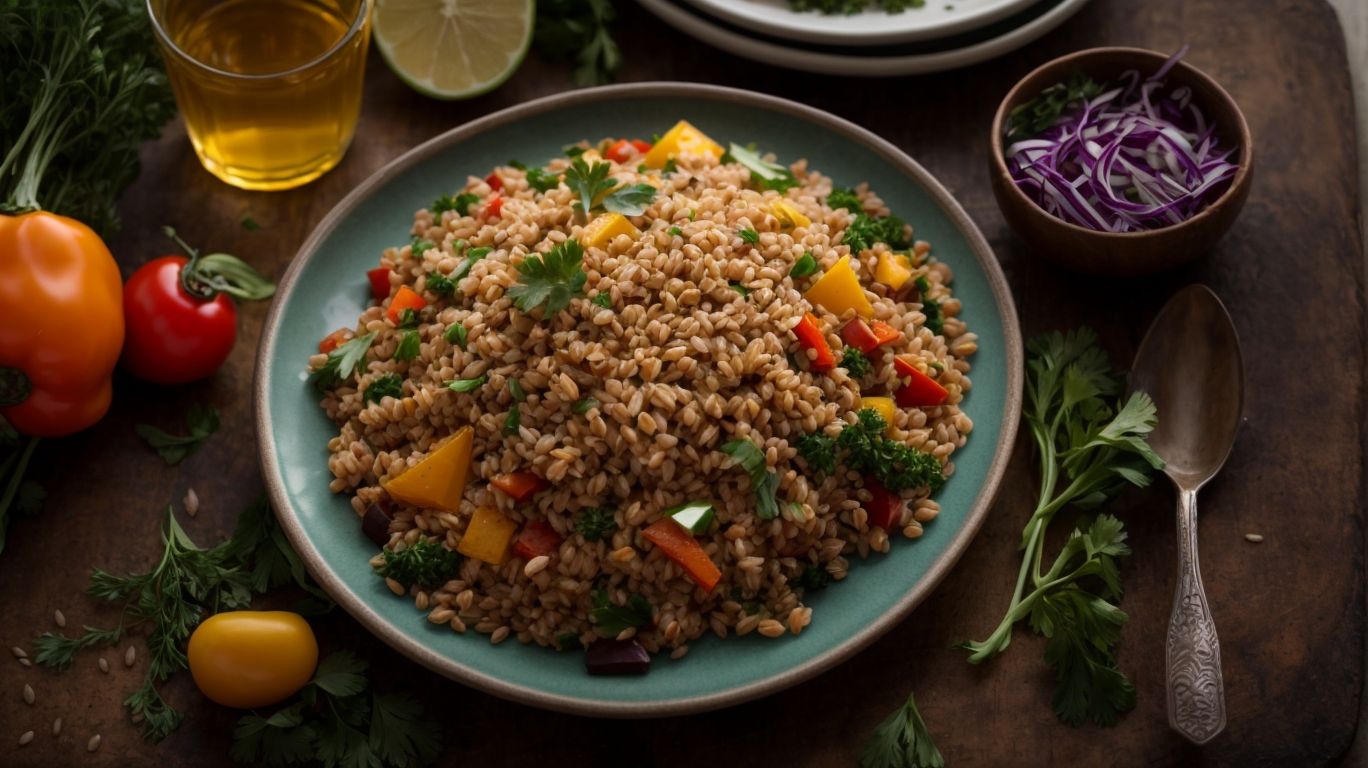
Credits: Poormet.Com – Albert Lee
Cooked farro lends itself beautifully to a variety of dishes, including flavorful salads, creamy risottos, hearty soups, and nourishing grain bowls.
The nutty flavor and chewy texture of farro make it a versatile ingredient that can elevate both simple and complex dishes. In salads, cooked farro can add a hearty element that balances the freshness of vegetables and the tanginess of dressings. When used in risottos, it imparts a unique earthiness along with a satisfying creaminess. Farro’s robust nature also makes it a perfect addition to hearty soups, where it can soak up flavors and provide a satisfying bite. In grain bowls, its wholesome goodness shines, offering a nutritious base for various toppings and sauces. From Mediterranean-inspired farro salads with feta, olives, and tomatoes to creamy mushroom risottos, the possibilities with cooked farro are truly endless.
Farro Salad
A farro salad, packed with protein-rich ingredients, fresh herbs, and a zesty lemon dressing, makes for a refreshing and satisfying meal or side dish.
Along with its nutritional benefits, farro salad offers delightful versatility in terms of protein sources, ranging from grilled chicken or tofu to chickpeas or feta cheese, catering to various dietary preferences and needs.
For those looking to experiment with flavors, dressing variations like a balsamic vinaigrette or a creamy tahini dressing can elevate the taste profile, adding a unique twist to the dish.
In terms of herb combinations, combining fresh basil with mint or parsley with dill can create a harmonious blend of aromas and flavors that complement the nuttiness of farro perfectly.
Farro Risotto
Farro risotto, with its creamy texture, seasoned with aromatic herbs and finished with a sprinkle of cheese, offers a delightful twist on the classic rice-based dish.
When preparing farro risotto, the key is to cook the farro until it reaches a tender yet slightly chewy consistency, which adds a unique depth of flavor to the dish.
Commonly used herbs to enhance the taste profile include fresh thyme, rosemary, and parsley. These herbs not only elevate the overall taste but also bring a refreshing aroma to the dish.
For cheese options, Parmesan or Pecorino Romano are popular choices, adding a salty and nutty richness to the creamy risotto.
The combination of these elements creates a satisfying and comforting meal for any occasion.
Farro Soup
Farro soup, simmered in a hearty broth with seasonal vegetables and aromatic seasonings, offers a comforting and nutritious meal option for cooler days.
When preparing a delicious farro soup, start by selecting a rich and flavorful broth as the base. A homemade vegetable or chicken broth works wonders, infusing the soup with depth of flavor. For a vegetarian version, opt for a robust mushroom broth. The choice of vegetables can vary based on the season – think hearty root vegetables like carrots and parsnips in the winter or vibrant greens like zucchini and bell peppers in the summer. Enhance the flavors by adding fresh herbs such as thyme, rosemary, or bay leaves. To further elevate the dish, consider sprinkling some grated Parmesan cheese right before serving.
Farro Bowl
A farro bowl, featuring a combination of protein-rich elements, fresh veggies, and a flavorful sauce, provides a balanced and satisfying meal in a convenient bowl format.
In terms of protein sources in a farro bowl, options like grilled chicken, roasted chickpeas, or marinated tofu can add a hearty component to the dish. For vegetable inclusions, think about colorful additions such as cherry tomatoes, cucumber slices, roasted bell peppers, or leafy greens for both flavor and nutrition.
As for sauce variations, you can experiment with tahini dressing, lemon vinaigrette, soy ginger glaze, or a spicy sriracha drizzle to elevate the taste profile of your farro bowl. To assemble a visually appealing meal, layer the farro at the base, arrange the protein and veggies evenly, and drizzle the sauce on top for a finishing touch.
How to Store Cooked Farro?
Properly storing cooked farro involves batch cooking and freezing for convenient future use, ensuring freshness and versatility for creating quick dishes, salads, or bowls.
One effective method is to prepare a large batch of farro and portion it out into smaller airtight containers or resealable bags before freezing. This practice not only saves time but also allows for easy customization when using frozen farro for various recipes. To maintain the texture and taste, consider adding a splash of olive oil or broth to the cooked farro before freezing, helping to keep it moist and flavorful. When ready to use, simply thaw the frozen farro in the refrigerator overnight or microwave it with a bit of water for quick rehydration.
What Are Some Tips for Cooking Perfect Farro?
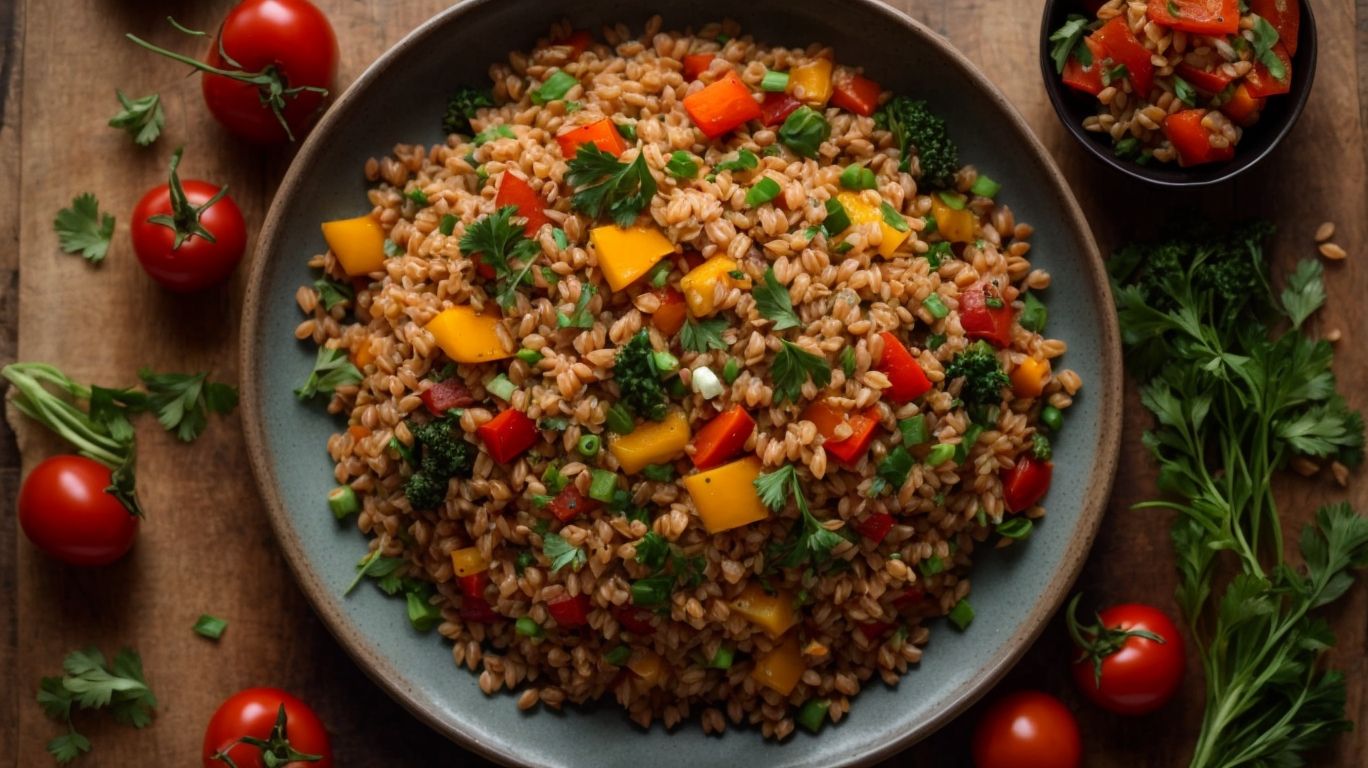
Credits: Poormet.Com – Ethan Martin
Achieving perfect farro requires attention to detail, from cooking it to a chewy al dente texture to proper draining, cooling, and steaming techniques to prevent the grain from turning mushy.
When cooking farro, remember to rinse it thoroughly before boiling to remove excess starch and debris that can cause clumping. Use a ratio of 1:3 farro to water and bring it to a boil before reducing the heat and letting it simmer for around 25-30 minutes, tasting occasionally to ensure you reach the desired firmness. To prevent overcooking, consider draining the farro immediately after cooking and spreading it out on a baking sheet to cool and dry, allowing it to reach its ideal consistency.
Conclusion
In conclusion, farro stands as a versatile and nutritious grain option that adds depth and flavor to a variety of dishes, making it a valuable ingredient for culinary exploration and wholesome cooking.
Its adaptability in both sweet and savory recipes, ranging from soups and salads to risottos and baked goods, showcases its versatility. Farro’s rich nutty flavor and chewy texture make it a satisfying choice for vegetarian and vegan meals, providing a source of plant-based protein, fiber, and essential minerals like magnesium and iron.
With an impressive nutrient profile and potential to aid in weight management and heart health, farro certainly proves its worth as a staple in anyone’s pantry. Its ancient origins and simple preparation methods also weave a touch of tradition and simplicity into modern cooking practices, offering a wholesome and nourishing option for health-conscious individuals seeking flavorful alternatives.
Frequently Asked Questions
What is Farro and how do I cook it?
Farro is a whole grain that has a nutty flavor and chewy texture. To cook it, first rinse the farro and then add it to a pot with water. Bring it to a boil, then reduce the heat and let it simmer for about 25 minutes until it is tender.
Can I cook Farro in a rice cooker?
Yes, you can cook Farro in a rice cooker. Use a 1:2 ratio of Farro to water, and let it cook on the regular rice setting for about 25 minutes. Remember to rinse the Farro before adding it to the rice cooker.
How do I make Farro fluffy?
To make Farro fluffy, it is important to rinse it before cooking. This removes any excess starch and helps prevent the Farro from clumping together. After cooking, let the Farro sit for a few minutes before fluffing it with a fork.
Can I add flavor to my Farro while cooking?
Absolutely! You can add herbs, spices, or even broth to the water when cooking Farro to infuse it with more flavor. This is a great way to customize the taste of your Farro to fit your dish.
What are some creative ways to use cooked Farro?
Cooked Farro can be used in a variety of dishes, such as salads, soups, and even as a substitute for risotto rice. You can also use it as a base for grain bowls or mix it into stir-fries for a nutritious and delicious meal.
Is Farro gluten-free?
No, Farro is not gluten-free as it is a type of wheat grain. However, it is lower in gluten than other types of wheat and may be better tolerated by some individuals with gluten sensitivities. Always check the label to ensure the Farro you are purchasing is gluten-free if you have a gluten intolerance.

